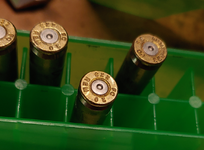- Thread Starter
- #41
super helpful and clear description. I can visualize now whats happening. I dont think my gun is severely overgassed but you are probably right it is a little bit. As a metric I checked some fired factory ammo (Hornady FMJ) and very hard to see but I can find where the extractor is on most cases and on one case opposite that I think I even see an ejector impression. I would guess a properly gassed gun wouldnt leave any mark on factory ammo.Over gassed may be causing the ejector swipe too. Over gassed guns the bolt starts to unlock before the chamber pressure has dropped. As the bolt turns, the pressure is pushing the case head against the bolt face causing the swipe. As the bolt unlocks and starts to pull on the rim, the chamber pressure is still high enough the case walls are gripping the chamber walls causing the rim to bend or tear.
Another sign of severely over gassed is short stroking. That is when the bolt gets hung up trying to pull the case out that it doesn't have enough kinetic energy left to fully cycle.
Your rifle may be at least mildly over gassed if just bending rims. If it is slipping the extractor over the rim or tearing rims and leaving them in the chamber it is severely over gassed.
I dont have an adjustable gas block, but can look into what weight buffer I have and buy the next one up. Mine is a rifle length gas system but with a carbine buffer tube. I never even thought about this when I upgraded the upper assembly... lol.














